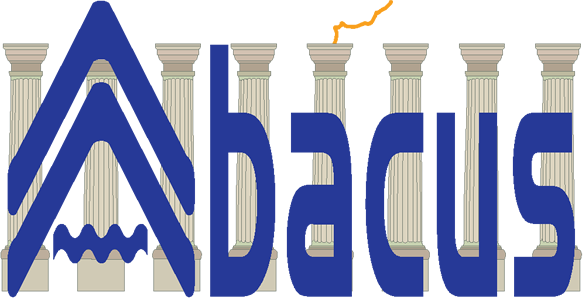When you buy products or services from a local small mom 'n pop business, you are not helping a CEO bankroll a third vacation home.
You are helping a little girl get dance lessons, a little boy get his team jersey, a family put food on their table, and a roof over their head. Most important you are helping the local Reno economy get on its feet again.
Abacus clients are our only shareholders and they are the ones we strive to make happy and prosperous.
Thank you for supporting this local Northern Nevada small business!
20120522
20120521
Elevate WebSite ranking in search engines (#1)
Any WebSite is comprised of lines of code that inform your browser what to display. There are categorical segments of this code which can specifically inform search engines what the important parts of the WebSite are important. Think of it like bolding text. Instinctively we read the bold text as important. Search engines read certain segments of code as important the same way. Two such segments of code are:
Wrapping up (H Tags) are used to indicate levels of importance of information, while Title tags are used to indicate the subject of an entire WebPage. So in essence H tags and Title tags are closely related since they describe the content found on a WebPage.
Throughout my carrier as a Web and Internet design and developer I have looked behind the many WebPage magic curtains and found that neither of these two crucial tags had been used. While it is possible to create a fully functional WebPage that omits these tags, the people looking at a page will likely have no clue they are missing, but the ever important search engine audience will recognize these omissions, and rank it lower or even categorize the page making very difficult for those same people to find the page in the first place.
Title Tag:
As the name suggests a title tags is a section of code that defines the title of the document or WebPage. Web browsers use the title tag at the top of the browser window to indicate what page you are viewing. More importantly it displays a title for a WebPage in search engine results. These results help you and the search engine determine what the page consists of. Ex: The page your looking at is about dog breads, so the title tag might say something like"Famous Dog Breads around the World"Header Tags:
(H1, H2, H3...): While the title tag is more general, header tags are more specific. Header Tags are inform search engines what particular section of a WebPage is about. Ex: The page about dog breads is divided into five parts, each one discussing a particular dog breed. So there would be five H1 header tags, one for American Foxhound, a second for Bulldog, a third for Irish Terrier, and the final fifth one for Poodle. So now we have five distinct sections. Now if we look at the Poodle section, it is broken down into 2 sub sections. These would be H2 tags, subtags of the H1 tags. So our Poodle section is broken down into a section that talks about Poodle coloring, and the second section talks about personality traits commonly found in poodles. If the author of the page wanted to break down the Poodle coloring subtag into yet further subtags they would use the H3 tag and continue using a higher subtag number for each level of subtagging there was in the WebPage.Wrapping up (H Tags) are used to indicate levels of importance of information, while Title tags are used to indicate the subject of an entire WebPage. So in essence H tags and Title tags are closely related since they describe the content found on a WebPage.
Throughout my carrier as a Web and Internet design and developer I have looked behind the many WebPage magic curtains and found that neither of these two crucial tags had been used. While it is possible to create a fully functional WebPage that omits these tags, the people looking at a page will likely have no clue they are missing, but the ever important search engine audience will recognize these omissions, and rank it lower or even categorize the page making very difficult for those same people to find the page in the first place.
Subscribe to:
Posts (Atom)
